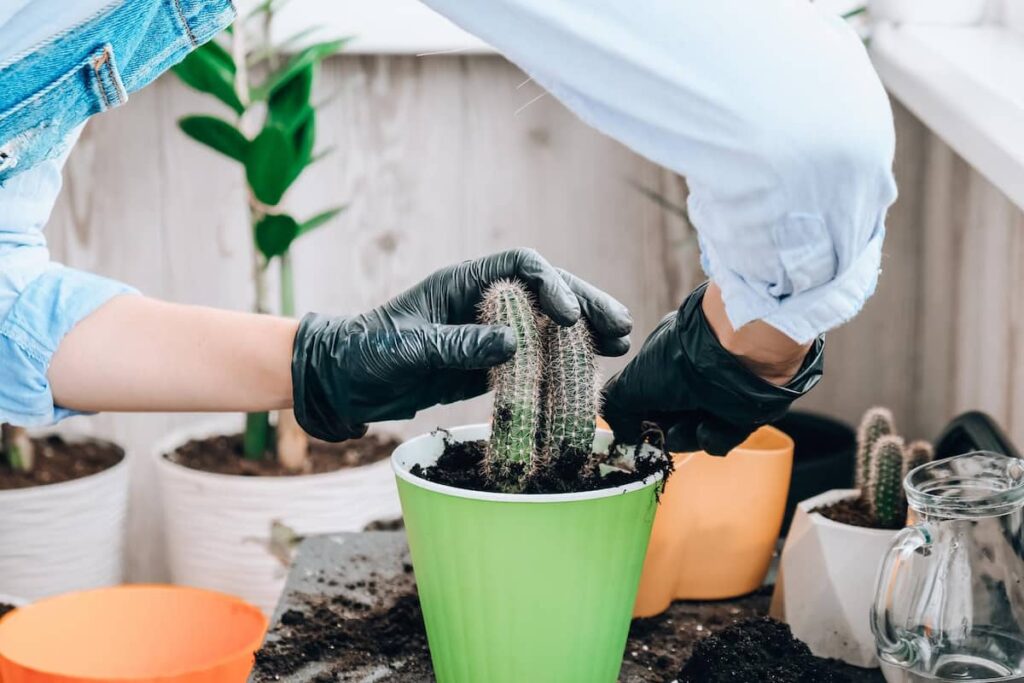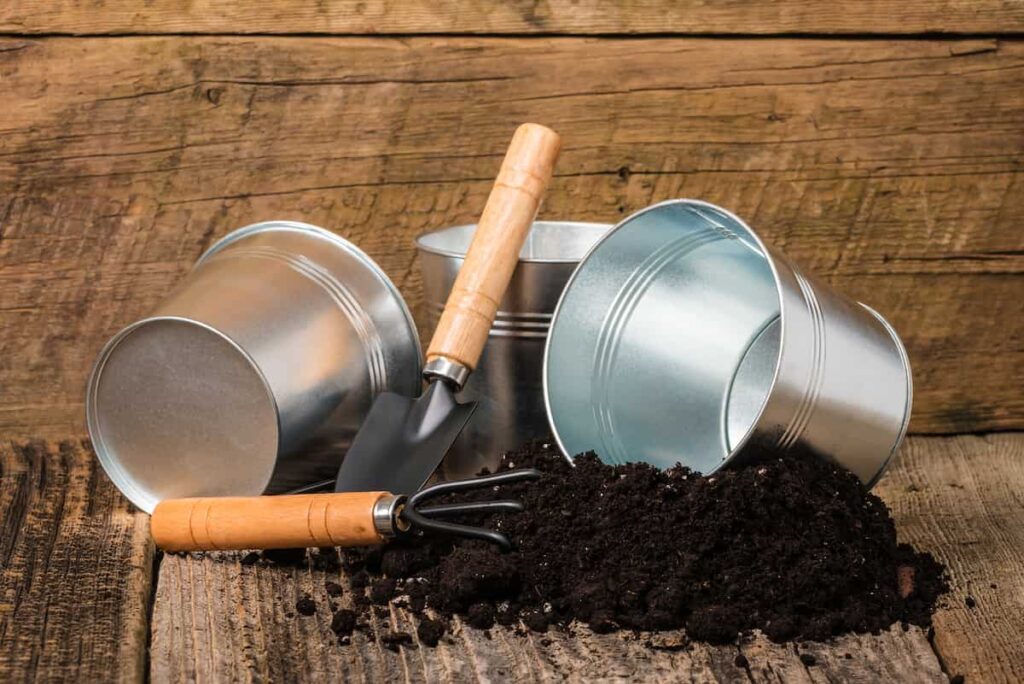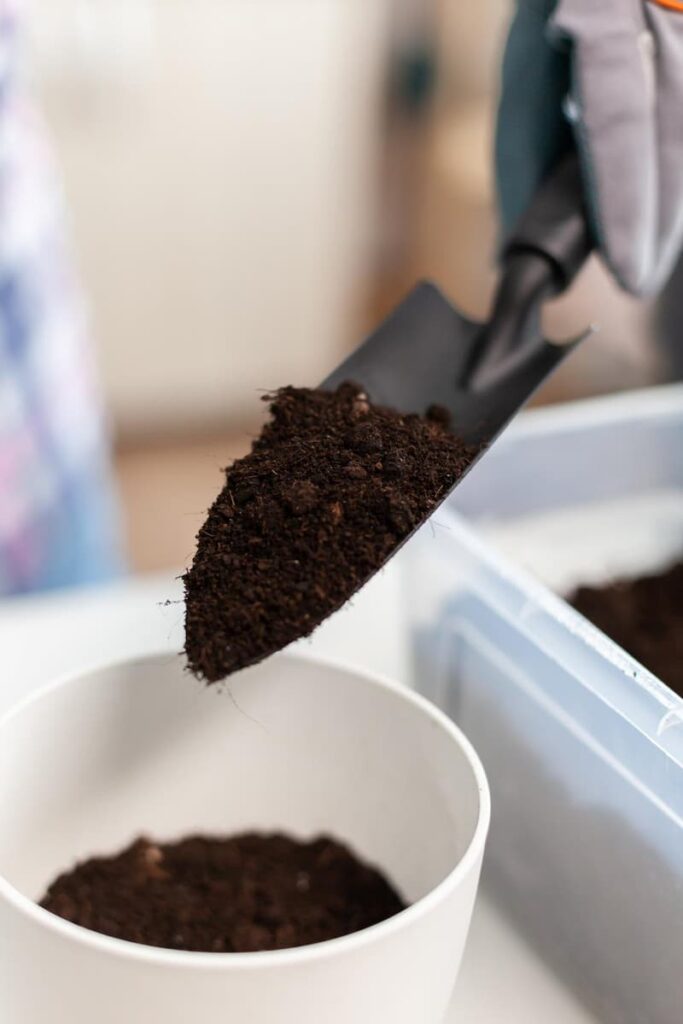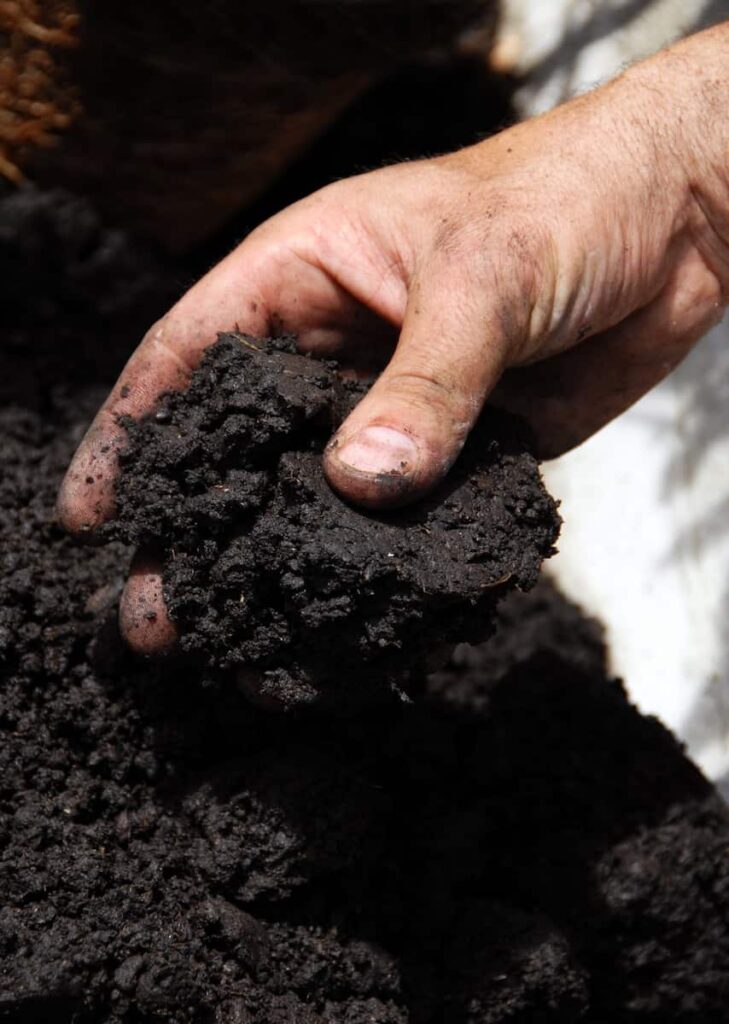Have you ever found yourself frustrated with wet soil in your houseplants? Whether it’s due to overwatering or poor drainage, wet soil can cause a range of issues for your indoor plants, including root rot and fungal diseases.
But don’t worry, there are effective ways to dry wet soil quickly and safely. In this article, I’ll explore various methods to dry wet soil in houseplants, including removing surface water, increasing airflow, applying heat, adding organic matter, and using a dehumidifier.
However, these methods do come with potential risks that indoor gardeners should be aware of. So, before you jump in, keep reading to learn about the best ways to dry wet soil in your houseplants and avoid potential problems.

Table of Contents
How to dry wet soil fast
1. Remove Surface Water
Removing surface water is a highly effective method for drying wet soil in houseplants. The process involves carefully removing any excess water that’s sitting on top of the soil. Here’s how to do it:
- Use a clean cloth or paper towel to gently absorb any excess water on the soil’s surface. Avoid pressing too hard on the soil or disturbing the plant’s roots.
- If your plant is in a pot with a saucer or tray, empty it immediately to prevent the plant from sitting in standing water. Proper drainage is crucial to prevent water logging, which can lead to root rot and fungal diseases.
- If your plant is in a decorative pot without drainage holes, remove it from the pot and place it on a tray or towel to allow the excess water to drain away.
- Place the plant in a well-ventilated area with indirect sunlight to help the soil dry out more quickly.
It’s important to remove surface water as soon as possible to prevent further harm to the plant. Standing water on the soil’s surface can lead to waterlogging, creating an ideal environment for mold and other pathogens to grow.
Removing surface water can also help prevent pests like fungus gnats, which thrive in moist soil.

2. Increase Airflow
If you want to get your waterlogged soil dry in a snap, then increasing airflow is your best bet.
Excess water can suffocate your soil, making it difficult for air to reach it and slowing down the drying process. But by increasing airflow, you can promote evaporation and speed up the drying process.
Here are some ways to boost airflow over wet soil:
- Use a fan: Place a fan strategically so that it blows air over the wet soil. A large fan or blower could also do the trick for bigger areas.
- Open windows and doors: For indoor spaces like your garage or home, opening windows and doors can improve air circulation, helping to remove moisture from the air and speed up the drying process.
- Turn on ventilation fans: If you have ventilation fans at home, turning them on can help remove excess moisture from the air and promote airflow over the wet soil.
- Use a dehumidifier: In high humidity conditions, a dehumidifier can help remove excess moisture from the air, which can speed up the drying process.
It’s worth noting that increasing airflow alone may not be enough to dry extremely wet soil. You might have to combine this method with others like removing surface water or applying heat for optimal results.
Additionally, it’s essential to monitor the drying process to prevent over-drying or damage to your plants or soil. Regularly check the soil’s moisture content and adjust your drying techniques as needed.

3. Apply Heat
Want to dry that wet soil quickly? Applying heat is an effective solution that works by increasing the soil’s temperature, promoting evaporation, and speeding up the drying process.
Although the sun is a natural source of heat, there are other options to consider as well.
Here are some ways to apply heat to wet soil:
- Sun: Spread the wet soil in a thin layer and let it soak up the sun’s rays. A tiller can help turn larger areas of soil and expose them to the sun.
- Heat lamps: For smaller areas, heat lamps can provide concentrated heat to dry the soil. Make sure to adjust the distance of the lamp to prevent overheating.
- Infrared heaters: Infrared heaters can penetrate the soil to provide heat, accelerating the drying process.
- Hot air blowers: Hot air blowers can cover larger areas, increasing the soil’s temperature and promoting evaporation.
Remember to keep an eye on the soil’s temperature to avoid overheating and damage to your plants and soil. Overheating can make the soil hard and dry, killing off helpful microorganisms in the process.
As with increasing airflow, make sure you check the soil’s moisture content regularly to prevent over-drying, and adjust the heat source accordingly.

4. Add Organic Matter
If you’re looking to dry wet soil quickly, adding organic matter is an effective method worth considering.
Organic matter, like sawdust or dry leaves, can absorb excess moisture from the soil and speed up the drying process. Plus, it can improve the soil’s fertility and structure, making it more ideal for your plants.
Here are some ways to add organic matter to your wet soil:
- Spread organic matter: Spread a layer of organic matter over the wet soil and use a garden rake to work it into the soil. This method helps absorb excess moisture from the soil and enhance its structure.
- Mix organic matter into the soil: Mix organic matter such as compost or aged manure into the soil. This method boosts soil fertility, structure, and moisture absorption.
- Mulch: Mulching around plants retains moisture in the soil and prevents waterlogging. It works great in areas that receive heavy rainfall.
Don’t forget to add organic matter in moderation to avoid over-drying the soil and causing nutrient retention problems or growth issues in your plants.
Also, some organic matter like sawdust might attract pests, so monitor the soil’s moisture content regularly.
5. Use a Dehumidifier
Using a dehumidifier is another option to dry wet soil quickly, especially for indoor spaces like garages or basements. This machine removes moisture from the air by condensing it into water and collecting it in a reservoir.
Here’s how to use a dehumidifier to dry wet soil:
- Position the dehumidifier: Put the dehumidifier near the wet soil or in the same room to extract moisture from the air. Keep the machine away from water sources to avoid any damage.
- Turn on the dehumidifier: Power up the dehumidifier and set it to the correct level based on the room’s humidity level. Most models have a built-in hygrometer that detects humidity levels and automatically adjusts the machine’s settings.
- Monitor the dehumidifier: Keep an eye on the dehumidifier and empty the reservoir when it’s full. If there’s a continuous drain option, attach a hose to the machine and drain the water directly into a sink or drain.
It’s essential to note that using a dehumidifier is not the fastest method compared to increasing airflow or applying heat. But, it’s a practical way to dry wet soil indoors and enhance indoor air quality while preventing mold growth.
Keep in mind that a dehumidifier may not be the best choice for outdoor areas or large soil surfaces. It’s ideal for enclosed spaces, and you may want to consider other methods for drying open areas.

Potential risks of using these methods to dry wet soil
Although these methods can dry wet soil quickly, they do come with potential risks that gardeners should be aware of. Here are some risks to consider when using these methods:
- Removing surface water: It can lead to erosion and nutrient loss in the soil. Also, don’t go too hard when doing this as it can cause soil compaction, which can damage the soil’s structure and harm plant growth.
- Increasing airflow: Carelessness can cause soil erosion and nutrient loss. Too much airflow can lead to soil drying too quickly, leading to cracks and damage to the soil’s structure.
- Applying heat: Overheating the soil can make it hard and dry, making it difficult for plants to grow. Also, applying too much heat can kill off beneficial microorganisms in the soil, which can harm the soil’s ecosystem.
- Adding organic matter: Too much or the wrong type of organic matter can cause over-drying, leading to nutrient retention problems and harming plant growth. Also, some organic matter can attract pests like rodents and insects, causing problems later on.
- Using a dehumidifier: It can be costly to run and can increase energy bills. Using it in humid climates may not reduce humidity levels, and it’s not suitable for drying outdoor soil.
To avoid these risks, it’s important to use these methods carefully and monitor the drying process regularly. Adjust the methods based on the soil’s moisture content, so as not to over-dry or harm the soil or plants.

How to prevent wet soil in the future
Preventing wet soil in houseplants is crucial for their overall health and growth. Here are some effective ways to avoid wet soil and maintain healthy indoor plants:
- Use well-draining soil: Choose soil that is well-draining and contains materials like perlite, vermiculite, or sand that help improve drainage. These materials can prevent water from getting trapped in the soil and lead to waterlogging.
- Proper watering technique: Overwatering is a common cause of wet soil in houseplants. To avoid this issue, ensure that you’re watering your plants correctly. The amount and frequency of watering depend on the plant species, pot size, and environmental conditions. Generally, water your plants when the top inch of soil is dry, and avoid leaving standing water in the saucer or tray.
- Adjust pot size: Using the right size pot for your houseplant can help regulate soil moisture. Using a pot that is too big for the plant can lead to soil that stays wet for too long, while a pot that is too small can lead to soil that dries out too quickly. Therefore, choose a pot that is appropriate for the size of the plant and its root system.
- Increase airflow: Proper airflow can help prevent excess moisture from accumulating around your houseplants, reducing the chances of wet soil. Consider using a fan or opening windows to improve air circulation around your plants.
- Address drainage issues: Ensure that your houseplant’s pots have adequate drainage holes to allow excess water to escape. If there are drainage issues, consider adding more holes or using a layer of gravel or rocks at the bottom of the pot to improve drainage.
By following these preventative steps, you can avoid wet soil in your houseplants and maintain their health and growth. Proper watering, using well-draining soil, adjusting pot size, increasing airflow, and addressing drainage issues can help regulate soil moisture levels for your plants.
With these tips, you can prevent problems like root rot and fungal diseases, ensuring that your indoor plants thrive.

FAQs
How long does it take for soil to dry out?
The time it takes for soil to dry out depends on various factors, including soil type, weather conditions, and drainage capacity. Sandy soil, for example, dries out faster than clay soil. Typically, it takes around 1-3 days for the topsoil to dry out after moderate rainfall.
How do I know if my soil is completely dry?
To determine if your soil is completely dry, insert a gardening tool or touch the soil with your fingers. If the soil is hard and compact, and the tool does not penetrate easily, it’s an indication that the soil is dry.
Should you let your soil dry out?
Overwatering can cause root rot and fungal diseases, which can harm plant growth. Therefore, allowing the soil to dry out between watering can be beneficial. But, it’s important to strike a balance and avoid over-drying, which can also harm plant growth.
How do I know if my soil is dry enough?
To check if your soil is dry enough, monitor it regularly and use a moisture meter or touch the soil to check its moisture content. Water your plants when the top 1-2 inches of soil is dry to the touch.
Observe your plants’ growth and look for signs of stress like wilting or yellowing leaves. These signs indicate that your soil may be too dry, and you need to water your plants more frequently.
Can I use a hairdryer or other electrical devices to dry wet soil quickly?
Using a hairdryer or other electrical devices to dry wet soil quickly is not recommended due to potential safety hazards and the limited amount of soil that can be dried. Instead, natural methods like the ones outlined earlier are safer and more effective for drying wet soil.

How does the soil’s composition affect its ability to dry, and are there any differences in drying methods for different types of soil?
The soil’s composition affects its ability to dry in various ways. Sandy soil dries out faster than clay soil, so it requires different drying methods. To prevent over-drying, adding organic matter or mulch can help retain moisture in sandy soil. Increasing airflow and applying heat can also help dry sandy soil quickly.
On the other hand, improving drainage by adding sand or gravel can help prevent waterlogging and speed up the drying process for clay soil. Removing surface water and using organic matter can also enhance the soil’s drainage capacity.
It’s crucial to use the appropriate drying methods for your soil type to avoid over-drying or damage to the soil. Therefore, understanding your soil’s composition and its drying capabilities can help you choose the best method for drying wet soil quickly and effectively.
